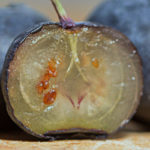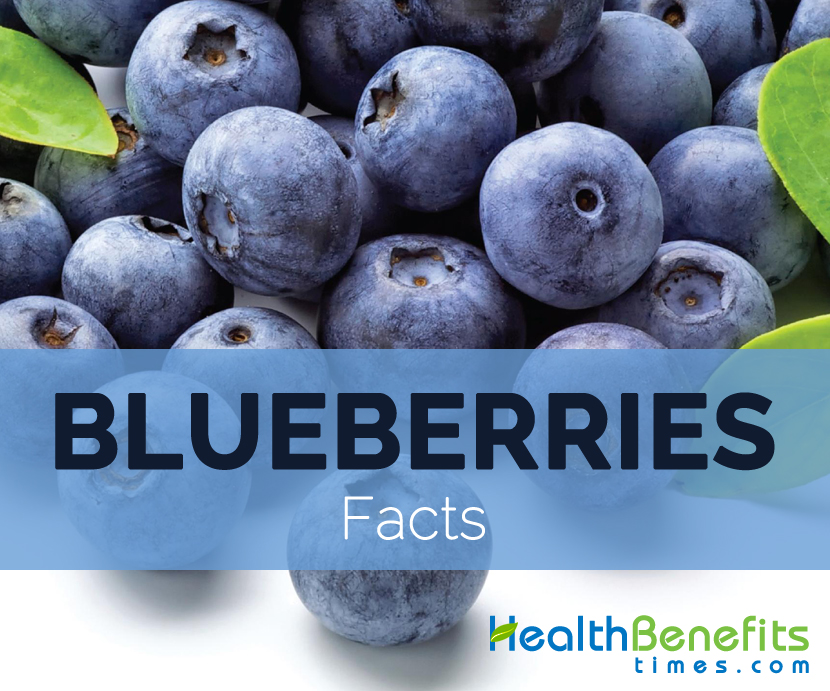| Name |
Blueberry |
| Scientific Name |
Vaccinium Corymbosum |
| Native and History |
North America also grown in the Southern Hemisphere in Australia, New Zealand, and South American countries. Blueberries were first cultivated in the United States by Elizabeth Coleman White in the Southern New Jersey village of Whitesbog |
| Common/English Name |
American Blueberry, Blueberry, High-Bush Blueberry, Northern Highbush Blueberry, Swamp Blueberry |
| Name in Other Languages |
(Scots) Blaeberry;
(Norwegian) Blåbær;
(Canada) Airelle En Corymbe (French);
(Czech) Borůvka Chocholičnatá;
(Eastonian) Kännasmustikas;
(Finnish) Pensasmustikka;
(French) Airelle D’amérique, Bleuet À Corymbes, Corymbelle, Myrtille D’amérique, Myrtille, Géante;
(Danish) Amerikansk Blåbær;
(Dutch) Trosveenbes;
(German) AmerikanischeBlaubeere, Amerikanische Blueberry, Kultur-Heidelbeere;
(Italian) Mirtillo Gigante Americano;
(Norwegian) Nordamerikansk Blåbær;
(Polish) Borówka Wysoka;
(Slovašcina) Ameriška Žlahtna Borovnica;
(Spanish) Arándano Americano;(Swedish) Amerikansk Blåbär, Amerikanska Blåbär |
| Edible Plant Parts and Uses |
Fruit: Raw, boiled, stewed, baked, smoke-dried, sun-dried
and used like raisinsLeaves: As herbal tea |
| Plant Growth Habit |
Slow-growing, deciduous, monoecious, erect shrub with several stems arising from the bole and growing to 1–3.5 m high |
| Growing Climate |
Slow-growing, deciduous, monoecious, erect shrub with several stems arising from the bole and growing to 1–3.5 m high |
| Soil |
Wet to dry, acid, rocky soils to organic peats |
| Plant Size |
Low-growing plants reaches ten centimeters tall and large shrubs reaches four to five meters in height |
| Lifespan |
Low-growing plants reaches ten centimeters tall and large shrubs reaches four to five meters in height |
| Root |
A shallow root system so it should be planted in a hole at least twice as large as the existing root system and mulched with a 7-10 cm (3-4 inch) layer of organic mulch. |
| Bark |
Shredded bark |
| Branchlets |
Larger branches |
| Stem |
Undersides of the stem may be white-pubescent. |
| Leaf |
Deciduous or evergreen, ovate to elliptical, up to 8 cm (3 inch) long., and 1–8 cm (0.39–3.1 inch) long and 0.5–3.5 cm (0.20–1.4 inch) broad. |
| Buds |
Red, ovoid and pointed |
| Flower |
White, pale pink or red and sometime tinged greenish |
| Fruit shape & size |
Small, bell shaped with a flared crown at the end, around 5-16 millimeters (0.2-0.6 inches) in diameter |
| Fruit weight |
Above half a gram (1 cup of blueberries: 148 gm) |
| Fruit color |
Pale greenish at first, then reddish-purple and finally dark purple when ripened. |
| Flesh color |
Light green, creamy white, gradient white-purple depend upon varities |
| Flavor/aroma |
More astringent and less sweet |
| Fruit Taste |
Tangy semi-sweet and sour |
| Seed |
Many soft, tiny and barely noticeable seeds |
| Varieties/Types |
Lowbush Blueberries, Highbush Blueberries, Rabbiteye Blueberries |
| Season |
- Available usually in mid-season (late spring to late summer, peaking in July and August).
- Can be harvested 3-4 years after planting, but will only reach full production after more than 8 years
|
| Major Nutritions |
Nutrient:
Protein 1.1 g (2.20%),
Total fat 0.49 g (1.40%)
Carbohydrate 21.45 g (16.50%)
Total dietary fiber 3.6 g (9.47%)
Total sugar 14.74 gMinerals:
Manganese 0.497 (21.61%)
Copper 0.084 mg (9.33%)
Iron 0.41 mg (5.13%)
Phosphorus 18 mg (2.57%)
Potassium 114 mg (2.43%)
Zinc 0.24 mg (2.18%)
Magnesium 9 mg (2.14%)Vitamins:
Vitamin K 28.6 µg (23.83%)
Vitamin C 14.4 mg (16.00%)
Vitamin B6 0.077 mg (5.92%)
Vitamin E 0.84 mg (5.60%)
Vitamin B2 0.061 mg (4.69%)
Vitamin B1 0.055 m (4.58%)
Vitamin B3 0.619 mg (3.87%)
Vitamin B5 0.184mg (3.68%)
Vitamin B9 9 µg (2.25%)
Amino acids:
Valine 0.046 g (10.45%)
Isoleucine 0.034 g (1.93%)
Methionine and Cystine 0.03 g (1.79%)
Threonine 0.03 g (1.79%)
Leucine 0.065 g (1.76%)
Lysine 0.019 g (1.54%)
Phenylalanine and Tyrosine 0.051 g (1.53%)
Anthocyanidins
Cyanidin 12.52 mg
Petunidin 46.7 mg
Delphinidin 52.4 mg
Malvidin 100 mg
Peonidin 30 mg
Flavan-3-ols
(+)-Catechin 7.8 mg
(-)-Epigallocatechin 1 mg
Flavones
Flavonols
Kaempferol 2.5 mg
Myricetin 1.9 mg
Quercetin 11.4 mg
Proanthocyanidin
Proanthocyanidin dimers 9.5 mg
Proanthocyanidin trimers 7.3 mg
Proanthocyanidin 4-6mers 30.4 mg
Proanthocyanidin 7-10mers 21.2 mg
Proanthocyanidin polymers (>10mers) 201.3 mg |
| Health Benefits |
- Improves memory power and fight Alzheimer’s disease
- Reduce blood pressure and arterial stiffness
- Reduce belly fat, diabetes risk
- Inhibit cell development of fat cells
- Treatment for traumatic stress
- Counteract intestinal diseases
- Improve cognition
- Whole antioxidant support
- Cardiovascular benefits
- Blood sugar benefits
- Eye health
- Anti-cancer benefits
|
| Calories in 1cup (148 g.) |
84 Kcal. |
| It is said that |
- Native Americans used the plant and its fruit for medicines and food.
- High bush blueberries are used as a disease resistance.
- For generations, the berries and leaves are used to treat digestive orders, improve circulation, maintain eye health, and reduce inflammation.
- For centuries, ancient Greeks and Romans used blueberries to cure diseases related to urinary tract.
|
| Precautions |
- Blueberry fruit is probably safe when used in amounts commonly found in foods. But not enough known about the safety of the larger amounts used for medicine.
- Stop using blueberry at least 2 weeks before a scheduled surgery because it affect blood glucose levels and could interfere with blood sugar control during and after surgery.
- Blueberry interact with the medications such as glimepiride (Amaryl), glyburide (DiaBeta, Glynase PresTab, Micronase), insulin, pioglitazone (Actos), rosiglitazone (Avandia), chlorpropamide (Diabinese), glipizide (Glucotrol), tolbutamide (Orinase), and others.diabetes (Antidiabetes drugs).
- Allergic to stone fruits should avoid blueberry.
|
| How to Eat |
- Frozen blueberries could be added to your breakfast shake.
- Cold breakfast cereals could be added fresh or dried blueberries.
- A delicious elegant dessert could be made by a layer yogurt and blueberries in wine glasses and top with crystallized ginger.
- It could be eaten fresh or dried them for winter use.
- Jam could be made with blueberries, sugar, water, and fruit pectin.
- Blueberry wine is made from the flesh and skin of the low bush berry, which is fermented and then matured.
|
| Other Facts |
- Maine is the highest blueberry producer in the world.
- The high amount of antioxidants in blueberries prevents the damage caused by cancer, heart disease and Alzheimer’s.
- Studies suggest that women who have a diet rich in anthocyanin which are found in blueberries reduce the chances of heart disease.
- Studies show that blueberries assist the memory loss and increase circulation which eliminates the progression of degenerative diseases like Parkinson’s and Alzheimer’s.
|
 Due to its shade intolerance, it should be grown on wooded or open areas with moist, acidic, well-aerated and organic rich soils. It is restricted to grow on open swamps and bogs, lakeshores and streamside, open woods and high-elevation balds.
Due to its shade intolerance, it should be grown on wooded or open areas with moist, acidic, well-aerated and organic rich soils. It is restricted to grow on open swamps and bogs, lakeshores and streamside, open woods and high-elevation balds. Due to its shade intolerance, it should be grown on wooded or open areas with moist, acidic, well-aerated and organic rich soils. It is restricted to grow on open swamps and bogs, lakeshores and streamside, open woods and high-elevation balds.
Due to its shade intolerance, it should be grown on wooded or open areas with moist, acidic, well-aerated and organic rich soils. It is restricted to grow on open swamps and bogs, lakeshores and streamside, open woods and high-elevation balds.
